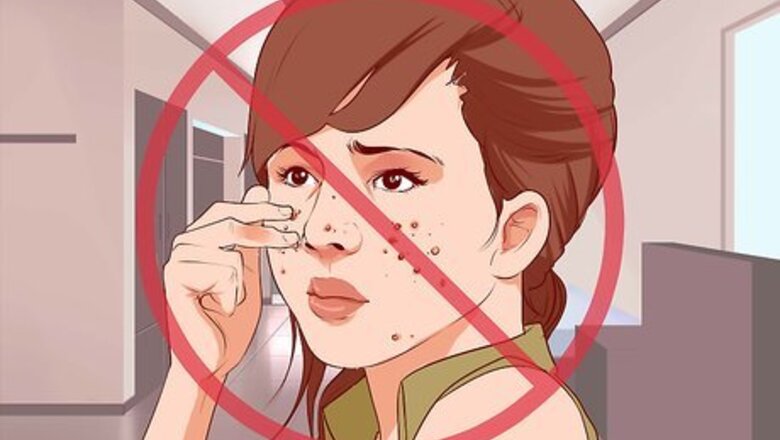
views
Reducing Redness Quickly
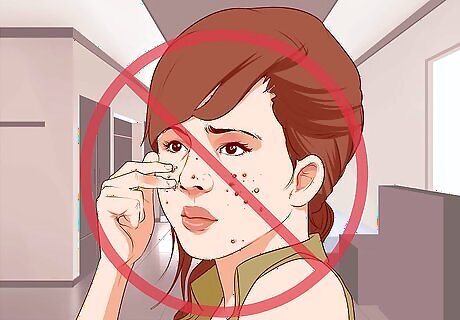
Don't pop your pimples. Although it is very tempting to squeeze the pimples on your face, you should avoid this at all costs. This will make your skin look even more red and inflamed than it already is. If you have a pimple that is really annoying you, try dabbing a bit of tea tree oil on it. This will help the pimple go away faster.
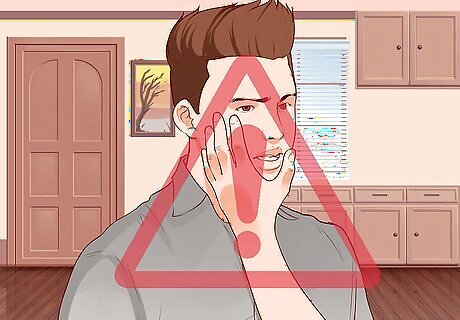
Keep your hands off of your face. Not only does this spread around oil and bacteria on your face, making acne worse, it also makes your skin red. Keeping your hands away from your face will help the redness disappear. You may make your acne worse because you also have oil and dirt on your hands. When you put your hand on your face, even absentmindedly, you are transferring what is on your hands to your face.
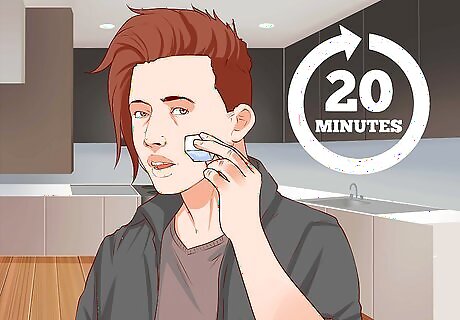
Try ice cubes. Wrap an ice cube in a paper towel, and gently hold it against the pimple for 20 minutes. Give yourself a 20-minute break, and then apply for another round of 20 minutes. This will help calm the skin on your face, and will feel soothing as well, especially if it is a hot day. If you prefer, you can also use a cool pack from the freezer, but be sure to wrap it in a thin towel so it doesn't get too cold on your skin.
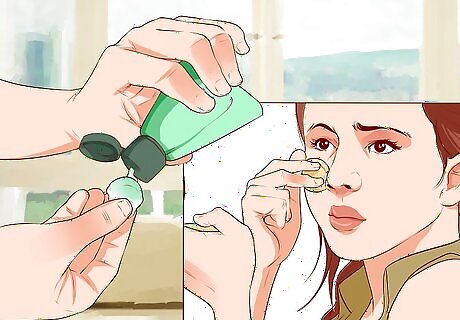
Use eye drops. This won't help get rid of the pimple, but it will help take away the redness. Drop a few eye drops onto a cotton ball, and dab it gently on the pimple. It will help remove the redness from the skin around the pimple. Remember that this won't do anything to reduce inflammation, or the pimple itself, but in a pinch it can help make the redness less obvious.
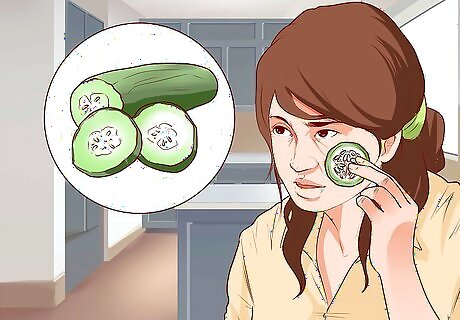
Apply cucumber slices. Cucumbers are great for reducing inflammation and redness. Place the cucumber in the fridge for a couple of hours (or in the freezer if you're in a hurry), cut off a few slices, and apply them to any pimples you are worried about. Let the cucumber slices rest on the pimple until they warm up. If you want to continue the treatment, apply a fresh, cold slice. This will help constrict the blood vessels around the pimple so there won't be so much redness.
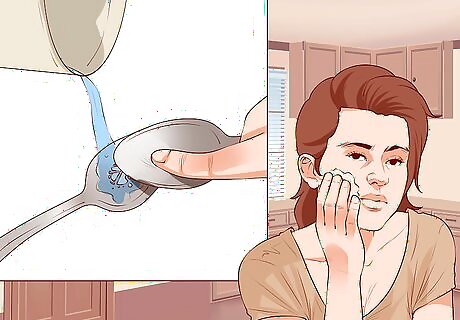
Apply aspirin to the pimple. Many use aspirin to reduce redness and inflammation caused by pimples. Aspirin contains salicylic acid, which is commonly used to treat acne. Not only will it help reduce redness, it will also help dry up the pimple. Crush a few aspirin tablets until they are a fine powder. Add water a few drops at a time until you are able to form a paste. Don't add too much water as you want the paste to be slightly sticky. Apply to the pimples you are concerned about, and leave on for a few hours or overnight, if possible. Wash your face with a gentle cleanser and water when you want to remove the past. Do not use this method if you are pregnant or breastfeeding.
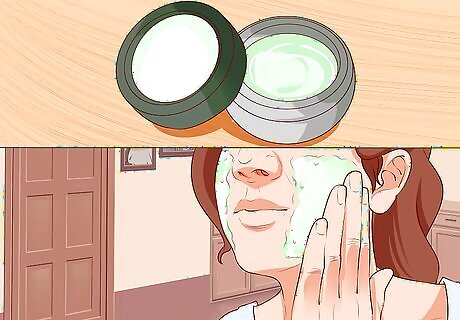
Apply green concealer. While this doesn't get rid of the redness, it will help cover it up for a few hours. Green concealer will work especially well because the green counteracts the redness of the skin around the pimple. You can also use regular concealer, but green will work best on pimples. Remember to apply lightly! Wash and moisturize your face before applying the concealer to minimize the amount of bacteria that is present on your skin. Then gently dab the concealer onto the pimple and blend with a makeup sponge. You can then apply foundation as you normally would (if you wear makeup) on top of the concealer.
Use a redness relief product. There are products made specifically to treat skin that is prone to redness. Look for gentle cleansers and creams that are formulated to reduce redness, like Eucerin Redness Relief or Aveeno Ultra-calming.
Dealing With Your Pimples
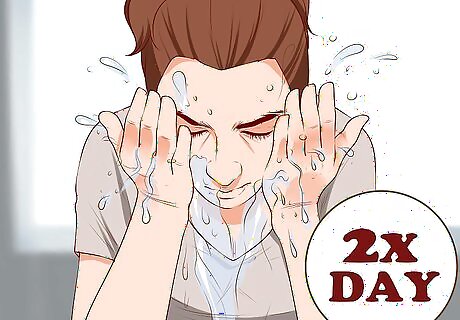
Wash your face twice a day. Use a gentle cleanser that is designed to treat acne. These cleansers will usually contain salicylic acid, benzoyl peroxide, alpha hydroxy acid, or even tea tree oil.; however, if your face is very sensitive, you should wash with a gentle cleanser without acne-fighting ingredients or with a low-strength version. Wet your face with lukewarm water before washing, then gently massage the cleanser into your skin using your fingertips. You can allow the cleanser to penetrate your skin better by leaving it on the skin for 30 seconds up to two minutes. Rinse thoroughly with running, lukewarm water. Pat your face dry using a clean towel, but don't rub, as this will irritate your skin, causing even more redness.
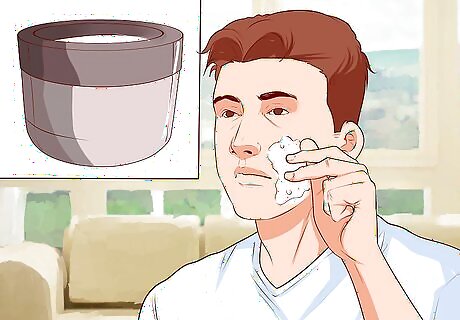
Apply moisturizer. Choose a moisturizer that is designed for your face, and also states that it is “noncomedogenic” and oil-free on the label. Apply the moisturizer in a thin, even layer on your skin directly after cleansing. Be very gentle, especially when applying the moisturizer to the delicate skin around your face. Try to look for a moisturizer that also includes an SPF, which will protect your skin from the sun.
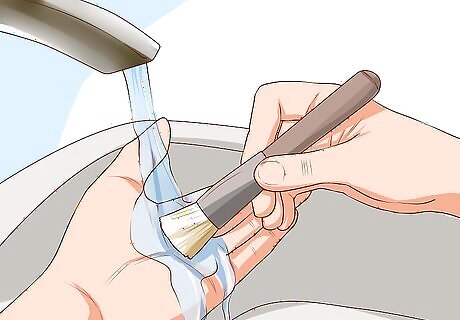
Keep your makeup brushes clean. If you use makeup brushes, you should aim to clean them once a week. Makeup brushes collect dirt and bacteria every single time you touch them to your face. The next time you use the brush, you are rubbing that bacteria back onto your skin. This is bad news, especially if you are struggling with breakouts. You can clean your brushes by getting the bristles completely wet using lukewarm water. Swirl the brush around on a bar of soap so that it picks up some of the soap or put a little baby shampoo in your palm and swirl the brush in this. Then rinse the brush thoroughly in water. Gently squeeze out any excess water, and lay it flat on a clean towel to dry. You can also buy brush shampoos or cleansing spritzers made specifically to clean makeup brushes. Place the brushes in the sun, and they will dry even more quickly.
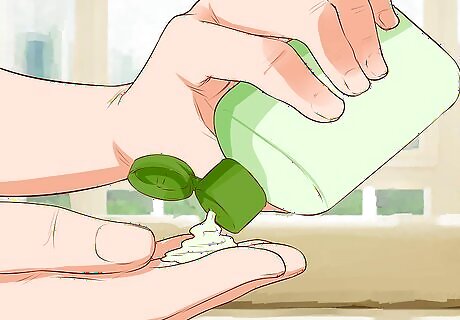
Apply a spot treatment. Spot treatments are designed to be applied directly to the pimple. They usually contain salicylic acid, benzoyl peroxide, or tea tree oil. It may be best to apply the spot treatment to the pimple after you have cleansed and moisturized, before going to bed at night. Spread the treatment in a light even coat over the affected area, and leave on while you sleep. In the morning, wash and moisturize your face as usual. Ask your dermatologist about creams containing azelaic acid, which can treat acne as well as reduce redness. Don't apply the treatment all over your face as this may irritate the healthy parts of your skin.
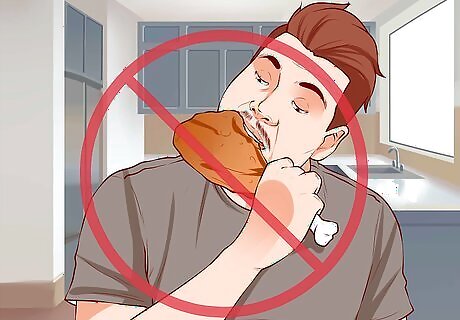
Avoid foods that contribute to inflammation. It is believed that dairy, gluten, sugar, vegetable oils such as canola oil, trans fats, processed meats, alcohol, and refined grains and flours all contribute to inflammation in our bodies (which includes our skin). While nearly all processed foods contain one or more ingredients from this list, including more fresh, unprocessed fruits and vegetables, and organic meats in your diet may help with your acne. It will probably be pretty difficult to avoid eating something from one of these groups, and that's ok. It's best to just eat as healthy as you can, and not worry too much when you eat something unhealthy.




















Comments
0 comment